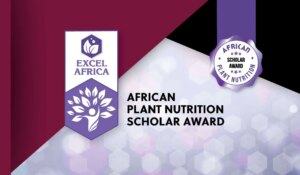JAMB 2025 Likely Chemistry Questions and Answers

Below is a compilation of 2000-word likely Chemistry questions and answers for the 2025 Joint Admissions and Matriculation Board (JAMB) examination. These questions are based on past JAMB trends, the JAMB syllabus, and key topics frequently tested in the exam.
Section A: Atomic Structure & Periodic Table
1. What is the number of electrons in a chlorine atom with an atomic number of 17 and a mass number of 35?
Answer:
The number of electrons in a neutral atom is equal to the atomic number.
∴ Number of electrons = 17
2. Which of the following elements has the highest ionization energy? (a) Sodium (b) Magnesium (c) Aluminum (d) Fluorine
Answer:
(d) Fluorine – Ionization energy increases across a period and decreases down a group. Fluorine is the most electronegative element in the list.
3. An element X has electronic configuration 2,8,2. What is its group in the periodic table?
Answer:
Group 2 – Elements with 2 valence electrons belong to Group 2 (alkaline earth metals).
4. Which of the following is a transition metal? (a) Calcium (b) Iron (c) Potassium (d) Aluminum
Answer:
(b) Iron – Transition metals are found in the d-block of the periodic table.
Section B: Chemical Bonding & Reactions
5. What type of bond exists between hydrogen and oxygen in water (H₂O)?
Answer:
Covalent bond – Hydrogen and oxygen share electrons to form a molecule of water.
6. Which of the following compounds has a coordinate covalent bond? (a) NH₄⁺ (b) NaCl (c) CO₂ (d) CH₄
Answer:
(a) NH₄⁺ – The bond between the H⁺ ion and NH₃ (forming NH₄⁺) is a dative (coordinate covalent) bond.
7. What is the oxidation state of sulfur in H₂SO₄?
Answer:
+6
Calculation:
H = +1 (×2) = +2
O = -2 (×4) = -8
Let S = x
∴ +2 + x – 8 = 0
x = +6
8. In the reaction: Zn + 2HCl → ZnCl₂ + H₂, zinc is:
Answer:
Oxidized – Zinc loses electrons (oxidation state changes from 0 to +2).
Section C: Stoichiometry & Mole Concept
9. What is the mass of 0.5 moles of oxygen gas (O₂)? [O = 16]
Answer:
Molar mass of O₂ = 16 × 2 = 32 g/mol
Mass = moles × molar mass = 0.5 × 32 = 16 g
10. How many atoms are present in 1 mole of carbon dioxide (CO₂)?
Answer:
1 mole of CO₂ contains:
- 1 mole of C atoms = 6.02 × 10²³ atoms
- 2 moles of O atoms = 2 × 6.02 × 10²³ = 1.204 × 10²⁴ atoms
Total atoms = 6.02 × 10²³ + 1.204 × 10²⁴ = 1.806 × 10²⁴ atoms
11. What volume (in cm³) will 0.5 moles of a gas occupy at STP?
Answer:
1 mole of gas occupies 22.4 dm³ (22,400 cm³) at STP.
∴ 0.5 moles will occupy 11,200 cm³.
Section D: Acids, Bases & Salts
12. What is the pH of a solution with [H⁺] = 1 × 10⁻³ mol/dm³?
Answer:
pH = -log[H⁺] = -log(1 × 10⁻³) = 3
13. Which of the following is a weak acid? (a) HCl (b) H₂SO₄ (c) CH₃COOH (d) HNO₃
Answer:
(c) CH₃COOH (Ethanoic acid) – It partially ionizes in water.
14. What is the product of the neutralization reaction between NaOH and HCl?
Answer:
NaCl (Sodium chloride) and H₂O (Water)
Reaction: NaOH + HCl → NaCl + H₂O
Section E: Organic Chemistry
15. What is the IUPAC name of CH₃CH₂CH₂OH?
Answer:
Propan-1-ol
16. Which of the following is an alkane? (a) C₂H₄ (b) C₃H₈ (c) C₂H₂ (d) C₆H₆
Answer:
(b) C₃H₈ (Propane) – General formula for alkanes: CₙH₂ₙ₊₂
17. What type of reaction occurs when ethanol is heated with concentrated H₂SO₄ to form ethene?
Answer:
Dehydration (elimination) reaction
Section F: Electrochemistry
18. In the electrolysis of molten NaCl, what is produced at the cathode?
Answer:
Sodium metal (Na) – Reduction occurs at the cathode: Na⁺ + e⁻ → Na
19. What is the oxidation number of chromium in K₂Cr₂O₇?
Answer:
+6
Calculation:
K = +1 (×2) = +2
O = -2 (×7) = -14
Let Cr = x (×2)
∴ +2 + 2x – 14 = 0
2x = 12
x = +6
Section G: Thermochemistry & Energetics
20. Which of the following processes is exothermic? (a) Melting ice (b) Dissolving NH₄Cl in water (c) Combustion of propane (d) Evaporation of water
Answer:
(c) Combustion of propane – Exothermic reactions release heat.
21. If the heat of formation of water is -286 kJ/mol, what does the negative sign indicate?
Answer:
The reaction is exothermic (heat is released).
Section H: Environmental Chemistry
22. Which gas is responsible for acid rain? (a) CO₂ (b) SO₂ (c) O₂ (d) N₂
Answer:
(b) SO₂ (Sulfur dioxide) – It reacts with water to form sulfuric acid.
23. What is the primary component of natural gas?
Answer:
Methane (CH₄)
Section I: Practical Chemistry
24. Which indicator turns pink in an alkaline solution? (a) Methyl orange (b) Phenolphthalein (c) Litmus (d) Universal indicator
Answer:
(b) Phenolphthalein – It is colorless in acid and pink in base.
25. What is observed when a burning splint is introduced into a gas jar of hydrogen?
Answer:
The gas burns with a pop sound.
Conclusion
These JAMB 2025 likely Chemistry questions and answers cover key topics from the syllabus. To excel:
✔ Master calculations (mole concept, stoichiometry).
✔ Understand periodic trends and chemical bonding.
✔ Practice organic chemistry nomenclature.
✔ Revise past JAMB questions for patterns.
Best of luck in your JAMB 2025 Chemistry exam! 🚀



![UNILAG Part-Time Degree Admission Form 2025 [ICE]](https://skyprey.com/wp-content/uploads/2025/04/UNILAG-3-75x75.jpeg)











